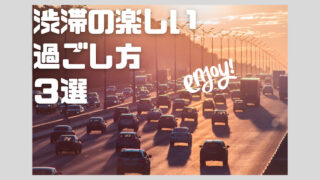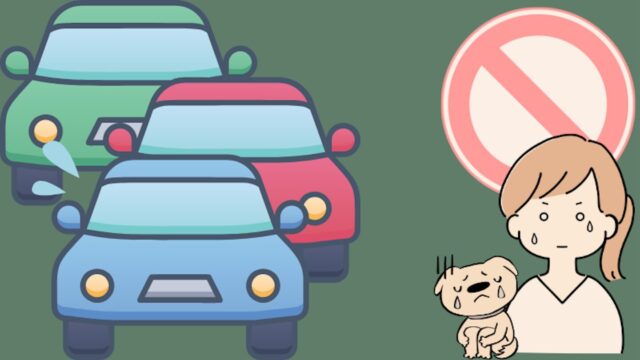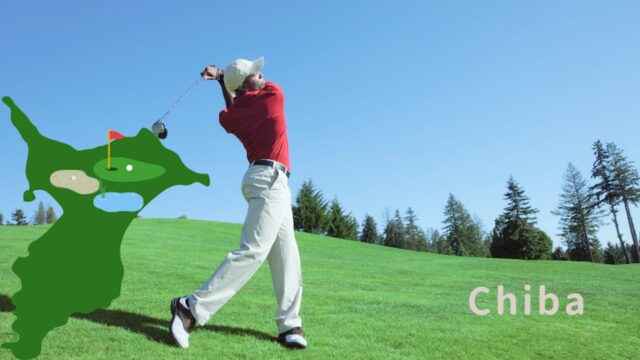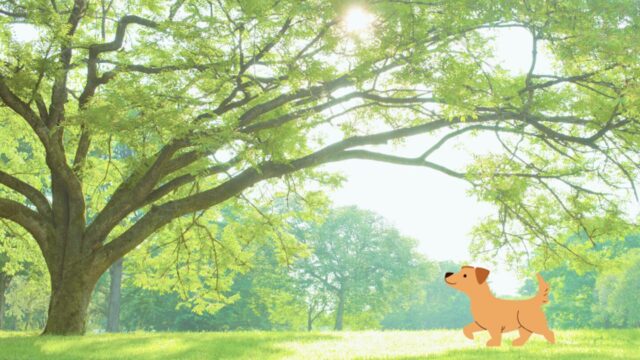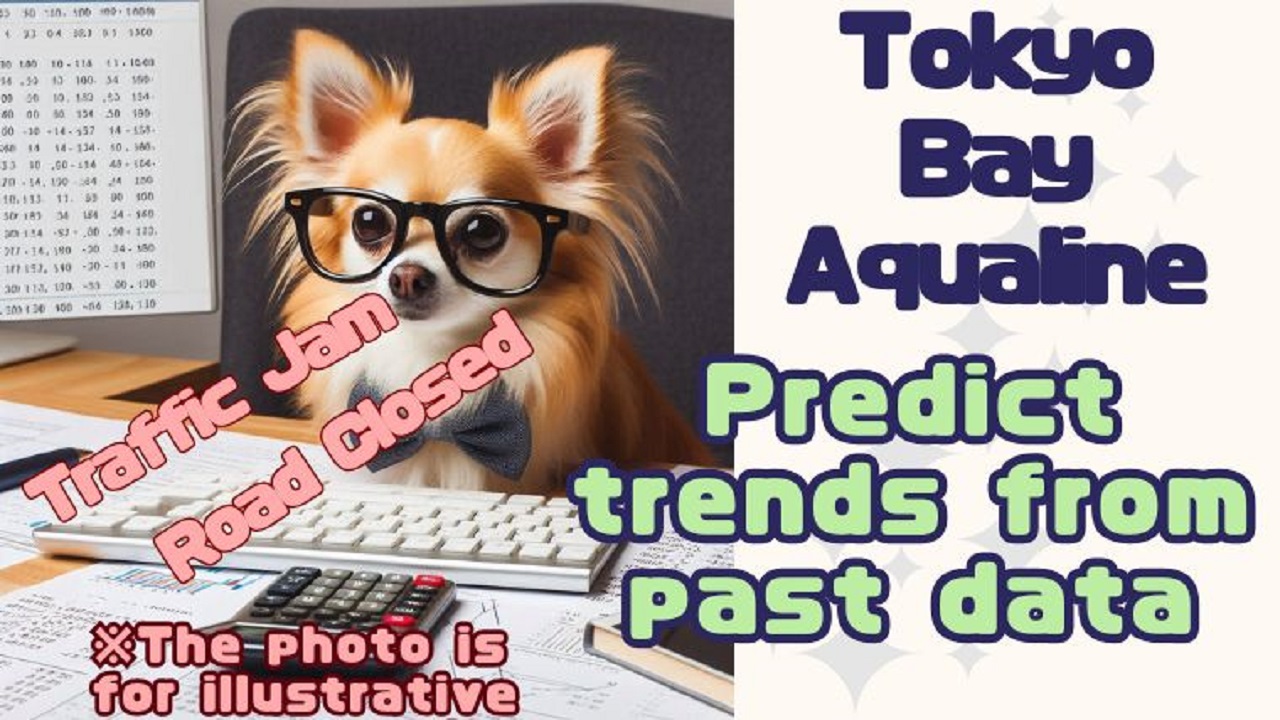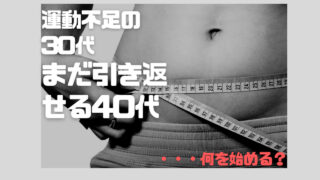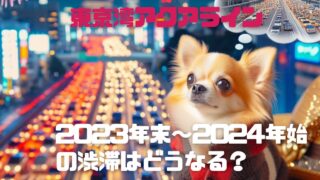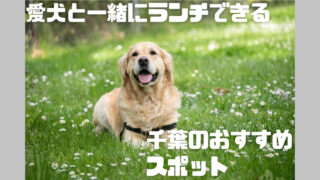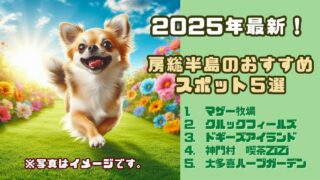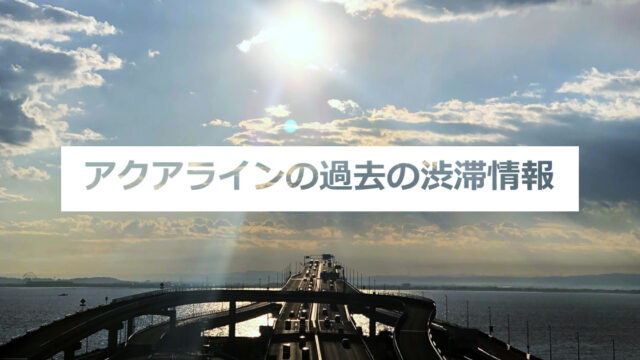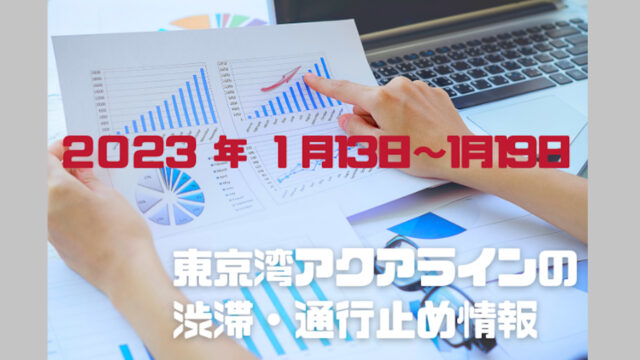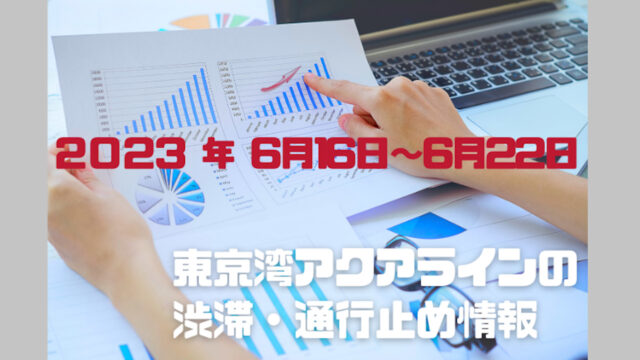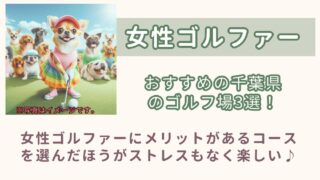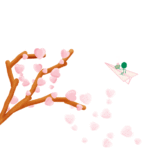Knowing the “traffic congestion trends on the Tokyo Bay Aqua-Line” when traveling will make it easier to plan your trip.
On this page, we will analyze congestion trends from past congestion information in order to avoid congestion on the Tokyo Bay Aqua-Line.
Traffic forecasts are difficult, but past data can be useful.
In addition to traffic jams, road closures may occur due to strong winds. We would like to provide you with information on when road closures may occur due to strong winds and what you should do.
There are hardly any road closures.
※ This article uses affiliate advertising.
※ Original data for traffic congestion information : 日本道路交通情報センター:JARTIC/道路交通情報NOW!!
- Tokyo Bay Aqua-Line Traffic Jam Trends [Summary]
- Latest information and useful information on Tokyo Bay Aqua-Line
- Road pricing operational test begins!
- About Tokyo Bay Aqua-Line
- Congested spots on the Tokyo Bay Aqua-Line
- Traffic jam point ① on the uphill route: Near the Kisarazu Kanada toll gate
- Traffic jam point ② on the uphill stretch: Uphill bridge
- Traffic jam point 3 on the uphill side: The uphill slope on the Kawasaki side of the tunnel
- Traffic jam point ① on the outbound route: Near the tunnel entrance on the Kawasaki side
- Downhill congestion point ②: Uphill on the Kisarazu side of the tunnel
- Abstract of the paper
- Past traffic congestion data for the Tokyo Bay Aqua-Line
- Monthly congestion trends on the Tokyo Bay Aqua-Line
- Tokyo Bay Aqua-Line Traffic Video
- Tokyo Bay Aqua-Line road closure information
- A plan to avoid traffic congestion on the Tokyo Bay Aqua-Line
- Bonus: Playing with your dog at Umihotaru
- Summary
- Any final words?
Tokyo Bay Aqua-Line Traffic Jam Trends [Summary]
First, let’s summarize the key points regarding traffic congestion trends.
The congestion trend at Umihotaru is thought to be the same as that of the Tokyo Bay Aqua-Line.
Trend of congestion on the uphill
・There is generally not much traffic congestion on weekdays. (Small congestion tends to occur around 5pm.)
・Traffic congestion tends to occur more frequently between 3pm and 7pm on Saturdays, Sundays, and public holidays.
・The most congested day of the week is Sunday.
・There is less traffic congestion on rainy days, even on weekends and holidays.
・Traffic jams occur even on weekdays during school holidays.
Trend of congestion on outbound routes
・There is less traffic congestion on the way down than on the way up.
・Traffic congestion tends to occur from Saturday morning until around noon.
For more details, please see below.
Latest information and useful information on Tokyo Bay Aqua-Line
The following article provides the latest information and useful information about the Aqua-Line.
Useful information includes how to check the traffic situation on the Aqua-Line.
We introduce information that is worth knowing.
Useful information about the Tokyo Bay Aqua-Line

The 2024 edition of the Tokyo Bay Aqua-Line news
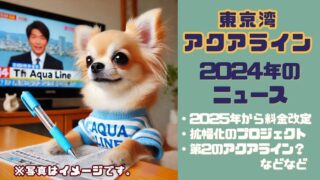
Road pricing operational test begins!
A trial run of road pricing aimed at easing traffic congestion began on Saturday, July 22, 2023. It has been decided that road pricing will be revised from April 2025. The major changes are as follows. During the most congested times, you will have to pay twice the usual fee.
・Saturdays, Sundays, and holidays, the fare for the inbound line from 1pm to 7pm is 1,600 yen
・Saturdays, Sundays, and holidays, the fare for the inbound line from 8pm to 4am is 400 yen
・Saturdays, Sundays, and holidays, the fare for the outbound line from 5am to 7am is 1,000 yen
Please refer to the article below for details.
Effective price hike!? Revision of the price fluctuation system
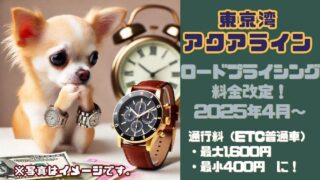
For measures against toll increases, please see the following page

About Tokyo Bay Aqua-Line
The Tokyo Bay Aqua-Line is a 15.1 km long toll road exclusively for automobiles, with 4.4 km of bridge from Kisarazu and approximately 9.5 km of tunnel from Kawasaki.
This is a convenient road that allows you to travel between Kawasaki and Kisarazu in about 15 minutes if there is no traffic jam.
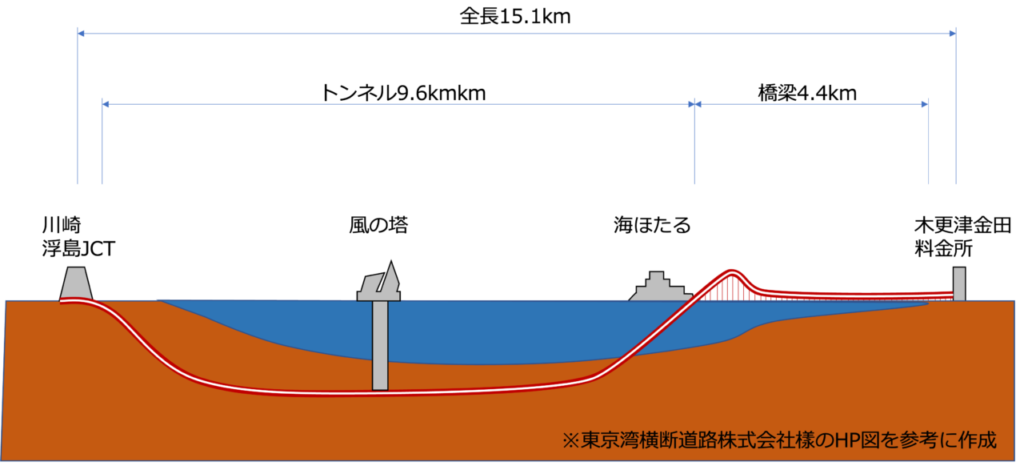
The one-way toll is as shown in the table below, with ETC-equipped vehicles receiving preferential treatment. The round-trip toll differs by 5,400 yen depending on whether or not your vehicle is equipped with ETC, so if you don’t have one yet, this might be a good opportunity to consider installing one.
| Ordinary car | Light vehicle | |
| ETC vehicle discount tolls | 800yen | 640yen |
| Regular price | 3,140yen | 2,510yen |
Congested spots on the Tokyo Bay Aqua-Line
On weekends, traffic jams often occur on the northbound lanes in the evening, and in some cases it can take more than 50 minutes to cross the 15km long Tokyo Bay Aqua-Line. In other words, you have to drive at a slow pace of about 20km per hour.
There are three major congestion points on the Tokyo Bay Aqua-Line on the uphill side and two on the downhill side.
Traffic jam point ① on the uphill route: Near the Kisarazu Kanada toll gate
This is the most congested point. It is where the Aqua-Line access road and the Kaneda toll gate join.
In addition, the intersection near the entrance to the Kisarazu toll gate is also prone to congestion. (This is where cars from the outlet, Costco, and downtown areas join.)
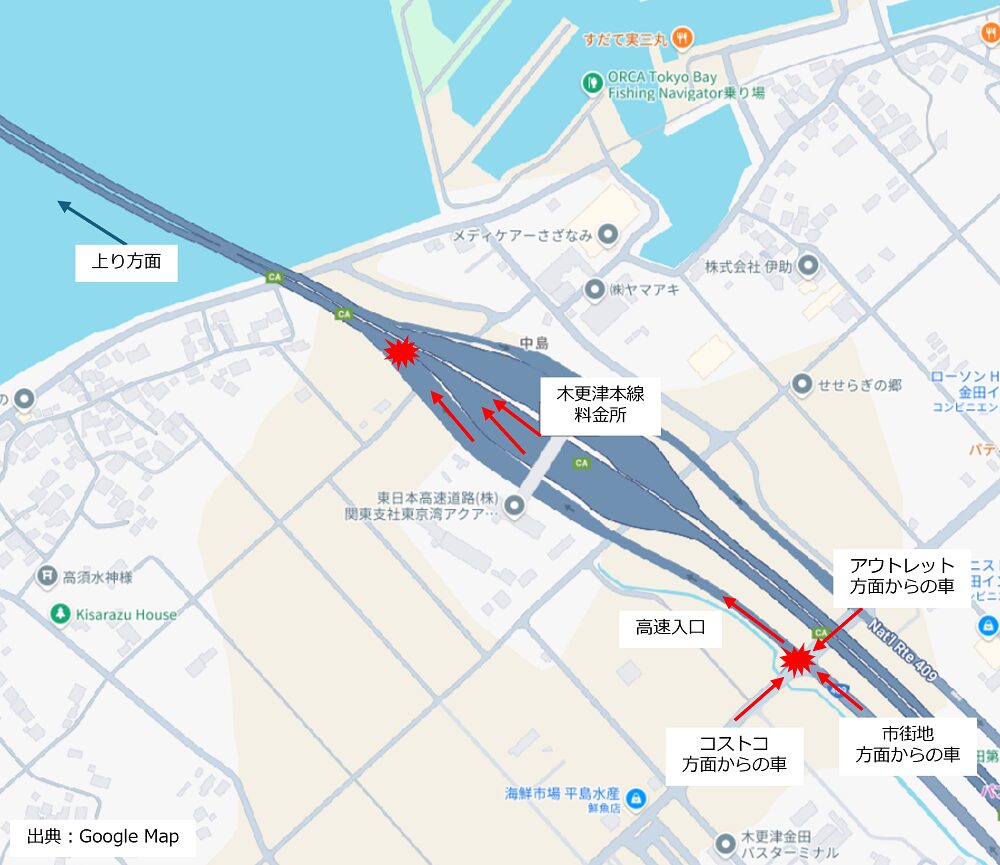
Traffic jam point ② on the uphill stretch: Uphill bridge
The Tokyo Bay Aqua-Line has the highest point on the bridge, and the uphill lanes go up towards it. When this happens, the speed of cars tends to drop, which can cause traffic jams.
From the top, the road goes downhill and enters a tunnel, making it easier to pick up speed, but be careful as a road from Umihotaru will join from the left near the entrance to the tunnel.
Traffic jam point 3 on the uphill side: The uphill slope on the Kawasaki side of the tunnel
The difference in elevation inside the tunnel is not that great, but there is a 4% downhill slope at the beginning and a 4% uphill slope at the end. On uphill sections, vehicle speeds tend to slow down, making it easy for traffic jams to form.
Traffic jam point ① on the outbound route: Near the tunnel entrance on the Kawasaki side
Near the entrance to the tunnel on the Kawasaki side, traffic congestion is likely to occur as cars converge from four directions: Tokyo, Yokohama, Kawasaki, and the Ukishima entrance.
Downhill congestion point ②: Uphill on the Kisarazu side of the tunnel
Just like the uphill section, the downhill section has a 4% downhill slope at the beginning and a 4% uphill slope at the end. On the uphill section, the speed of the car slows down and traffic tends to get congested. Also, near the exit is the entrance to Umihotaru, and the left lane is prone to traffic congestion.
Scientifically Understanding Traffic Jams
The key points of the article are as follows:
Abstract of the paper
・Definition of a traffic jam: “A state in which traffic volume decreases as the density of cars increases.”
・When the density of cars exceeds about 25 cars per km, the flow changes to the congestion phase (a state in which traffic volume decreases). In terms of the distance between cars, this is about 40 m.
・The waves of a traffic jam can be analyzed as shock waves that travel upstream in the flow, and the speed of the shock waves is about 20 km per hour.
・The front of the traffic jam is cut off at about 20 km per hour (0.33 km per minute). Therefore, for example, if there is a 1 km long traffic jam, it will disappear in about 3 minutes (0.33 km per minute x 3 minutes = 0.99 km) if there are no cars coming from behind.
・If you deliberately slow down a little and leave more distance between cars, delaying your arrival at the end of the traffic jam, you can prevent the traffic jam from growing, and if you time it right, you can even eliminate the traffic jam. It also acts as a cushion to stop the chain reaction of braking.
“Slow in, fast out” – Driving slowly into a traffic jam and quickly out of it will have the double effect of preventing the tail of the jam from growing and quickly reducing the front of the jam, effectively shortening the jam.
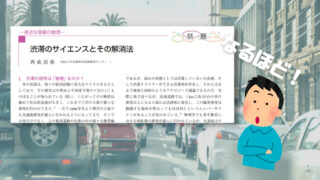

Past traffic congestion data for the Tokyo Bay Aqua-Line
This is aggregated data on the average traffic congestion length by day of the week and hour for approximately one year from May 2022. (The number of data points is 352 days x 15 hours (6:00-20:00) = 5,280.) Unit: km
First, let’s look at the amount of traffic on the way up.
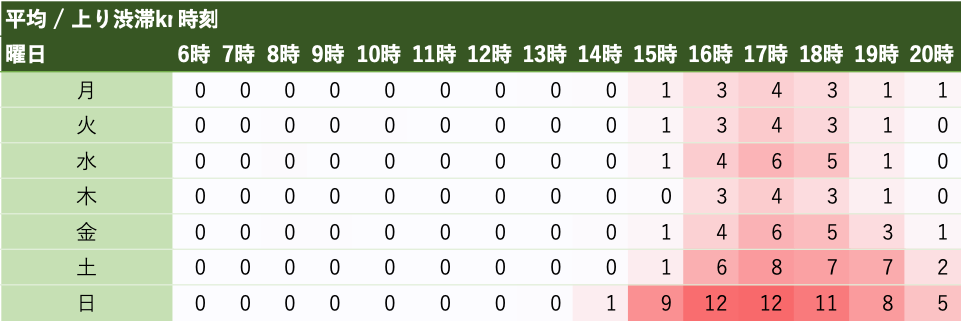
The amount of traffic congestion on the uphill stretch is the highest on Sundays, followed by Saturdays. There is no significant difference in the amount of traffic congestion on weekdays.
The amount of traffic congestion in the uphill direction between 2pm and 8pm has been graphed by “day of the week-time”.
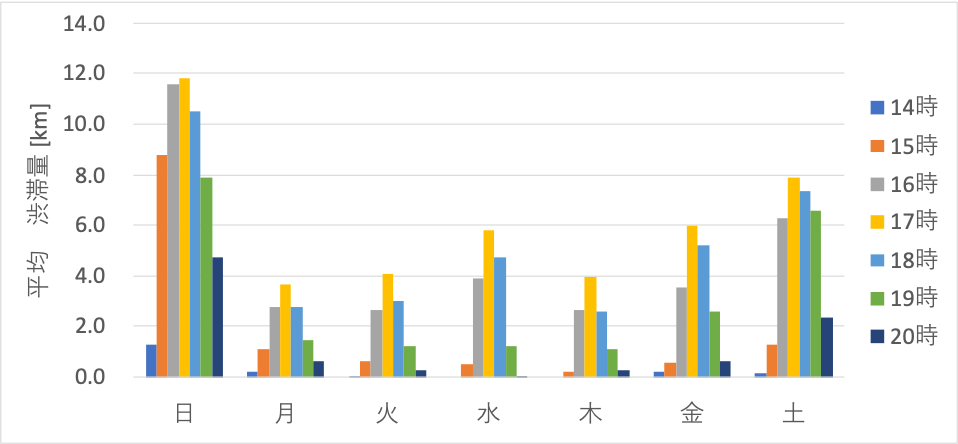
On Sundays, when traffic is heavy, the peak time is long, with long traffic jams seen from 3pm to 8pm. On other days of the week, the peak time is around 5pm.
Next, let’s look at the traffic congestion on the outbound route.
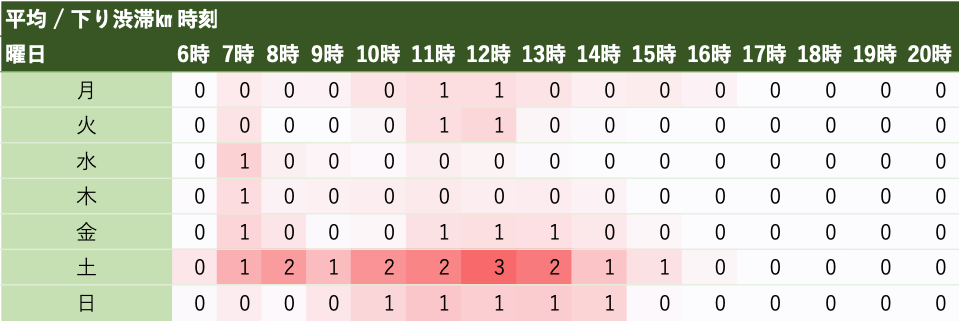
Traffic jams on the outbound route tend to be heavier on Saturdays. The outbound route is not as congested as the inbound route.
When the Aqua-Line is congested, is there an option to go around the hill?
The key points of the article are as follows:
Even in the worst case of traffic congestion on the Tokyo Bay Aqua-Line, it takes 50 to 60 minutes, so the trip around the hill, which takes at least 90 minutes (even when there is no traffic congestion), is unlikely to save any time. (When considering the route from Sodegaura to Ukishima (Kawasaki))
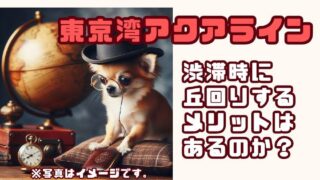
Monthly congestion trends on the Tokyo Bay Aqua-Line
The results are compiled from data from May 2022 to April 2023.
Top 5 months with the most traffic congestion
1st place: October, 911km
2nd place: December, 869km
3rd place: November, 826km
4th place: August, 804km
5th place: March, 771km
Traffic jams tend to occur more frequently during the autumn travel season when the heat has subsided.
Top 5 months with the least traffic congestion
1st place: February, 493km
2nd place: January, 505km
3rd place: June, 557km
4th place: September, 647km
5th place: July, 684km
There is less traffic congestion during the cold months of January and February.
Monthly weather data
It shows monthly data on precipitation, sunshine hours, temperature and wind speed.
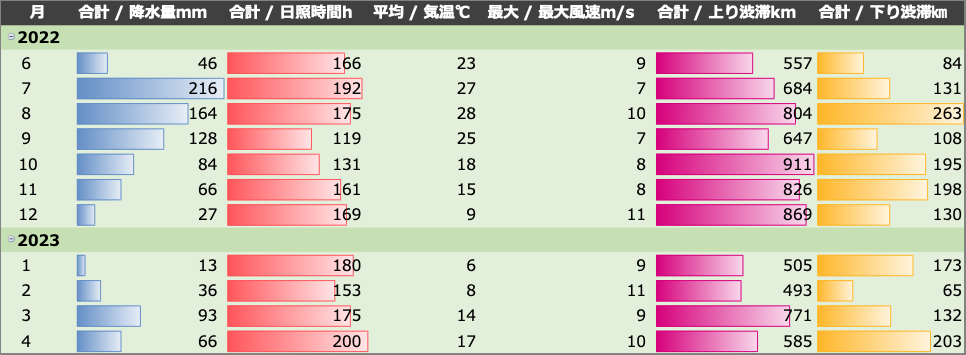
Monthly peak traffic times – weekdays
This graph shows the peak congestion times for upbound traffic on weekdays (Monday to Friday) by month. Weekday congestion occurs most frequently in August, when summer vacation is in full swing. The next most common months are December and March. This is likely due to school holidays. The peak time is around 5pm.
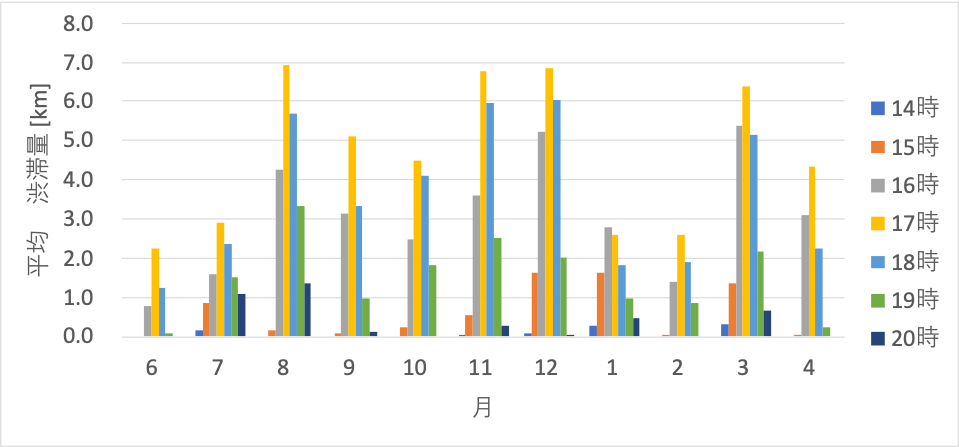
Monthly peak traffic times – Saturdays and Sundays
The following is a graph showing the peak traffic congestion times on Saturdays and Sundays by month. In August, which is during the summer vacation, traffic congestion on Saturdays and Sundays is lighter than in other months. In every month, long traffic jams tend to occur between 4:00 p.m. and 7:00 p.m.
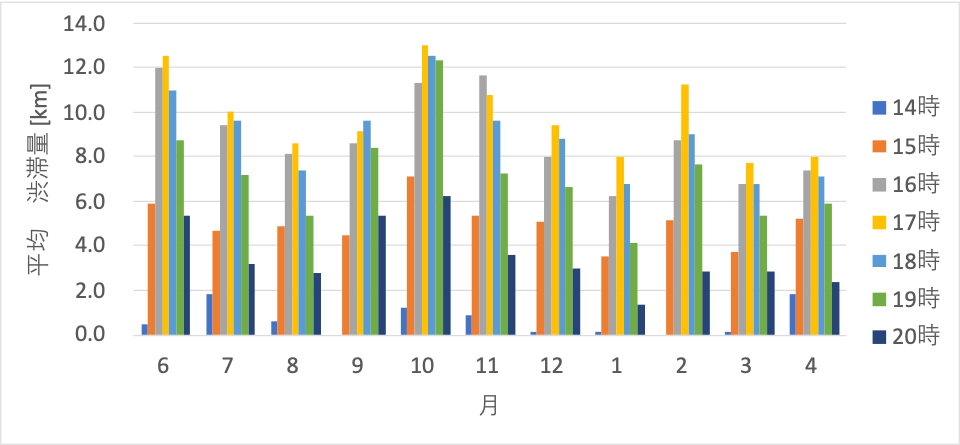
Click here for recommended spots to visit in Chiba with your dog
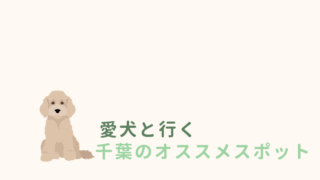
Tokyo Bay Aqua-Line Traffic Video
This is a video of the Tokyo Bay Aqua-Line.
This video shows no traffic jams, but it may be helpful for those who are using the Aqua-Line for the first time.
1) Going up, from Kisarazu Kanada toll gate to Kawasaki Ukishima JCT, no traffic jams
2) Going up, from Sodegaura toll gate to Aqua-Line link road to Kisarazu Kanada toll gate, no traffic jams
3) From Kawasaki Ukishima JCT to Kisarazu Kanada toll gate, no traffic jams on weekends
Tokyo Bay Aqua-Line road closure information
When will the Tokyo Bay Aqua-Line be closed?
The wind speed that is used as a guideline for road closures is said to be 20 m/s.
Be especially careful during typhoons! It seems that road closures can occur even if winds do not reach 20 m/s.
This area is normally windy in the spring, and you need to be careful of typhoons from summer to autumn.
Before heading out, please check the internet for information on traffic restrictions and wind speeds on the Tokyo Bay Aqua-Line.
Even if the road is not closed, if wind speeds exceed 10 m/s, cars will be quite susceptible to the wind. Please obey speed limits and drive safely.
What day was the Tokyo Bay Aqua-Line closed to traffic?
Data has been collected since May 2022. There have been four unplanned road closures by November 2023. (*There may be gaps in the data.) The status of two of these cases is described below. Please refer to the following page for details.
Click here for the day when the Tokyo Bay Aqua-Line was closed.
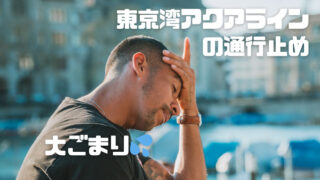
① The road was closed from 2:00 to 8:00 on Tuesday, September 20, 2022. Reason: Due to the approach of Typhoon No. 14. At that time, the wind speed did not actually reach 20 m/s.
There is a high possibility that the road will be closed if a typhoon approaches.
② The wind started to get stronger in the morning of Friday, December 23, 2022, and at 6:00 a.m. the wind speed exceeded 20 m/s, which is said to be the standard for closing the Tokyo Bay Aqua-Line. The road was closed at 8:00 a.m. and remained closed until 2:40 p.m.
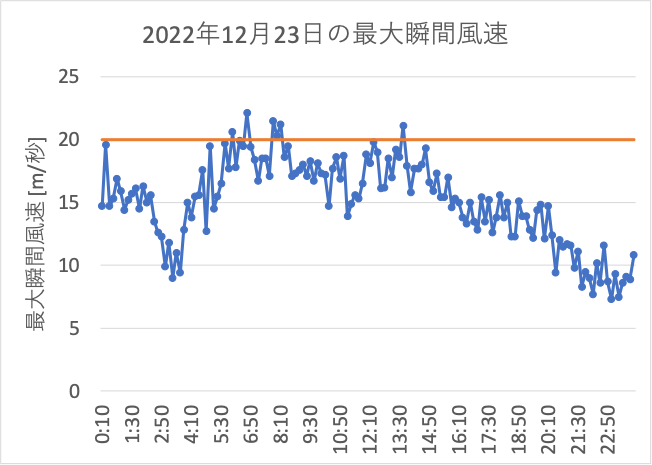
There was one planned road closure.
The road was closed on Sunday, November 6, 2022 from 8:30 to 13:30. Reason: The Aqua-Line Marathon will be held. The next one is scheduled for two years from now.
Past traffic jam summary page is here
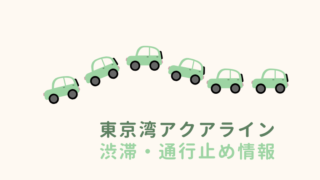
A plan to avoid traffic congestion on the Tokyo Bay Aqua-Line
Before COVID, there were few traffic jams on weekdays, but this year (2022), traffic jams can be seen even on weekdays. Traffic jams on the uphill side seem to start between 2 and 3 p.m. and peak between 4 and 6 p.m. It’s best to be prepared for it to take more than 50 minutes from Kisarazu to Kawasaki during peak times. There is Umihotaru PA on the way, but it takes time to get there, so it’s a good idea to use the restroom before getting on the highway.
Below are some ideas for avoiding traffic jams. I hope this helps.
Speed up your activity time
Traffic jams often start from 7am on the way down and 2pm on the way up, so if you cross to the Boso Peninsula early in the morning and arrive at the crossroads at 2pm you will be less likely to encounter traffic jams.
Return home late
The traffic jams on the way up tend to clear up after 8 p.m. It might be a good idea to have a leisurely dinner and then head home.
Choose a day when rain is forecast
On days when rain is forecast, there tend to be fewer golfers and less traffic congestion. This is a good time to visit if you don’t mind rain.
When traffic jams extend all the way to the Aqua-Line access road, it is better to get on the highway from the Sodegaura toll gate.
When entering the Kaneda toll gate from the local roads, it gets very crowded because there are cars coming from Kisarazu Outlet and Costco. If you head to Route 16 and then take the Aqua-Line link road from the Sodegaura toll gate, you can move along the main road even if it is congested.
Reference) Recommended route for returning from Kisarazu Outlet during peak hours is here
Also check this out! Avoid traffic jams with the Tokyo Bay Ferry!
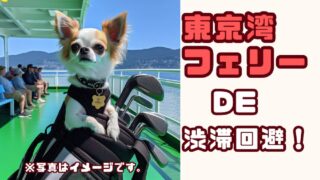
[Advertisement] Get the great deal of 31 days of free U-NEXT here
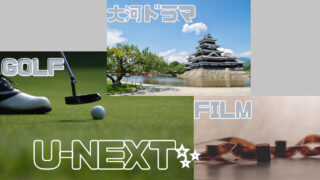
Bonus: Playing with your dog at Umihotaru
Humans aren’t the only ones who get tired from traffic jams and long-distance driving. Dogs can get tired, too. Why not take your dog for a walk at Umihotaru, a parking area located on the border between the bridge and tunnel sections of the Tokyo Bay Aqua-Line?
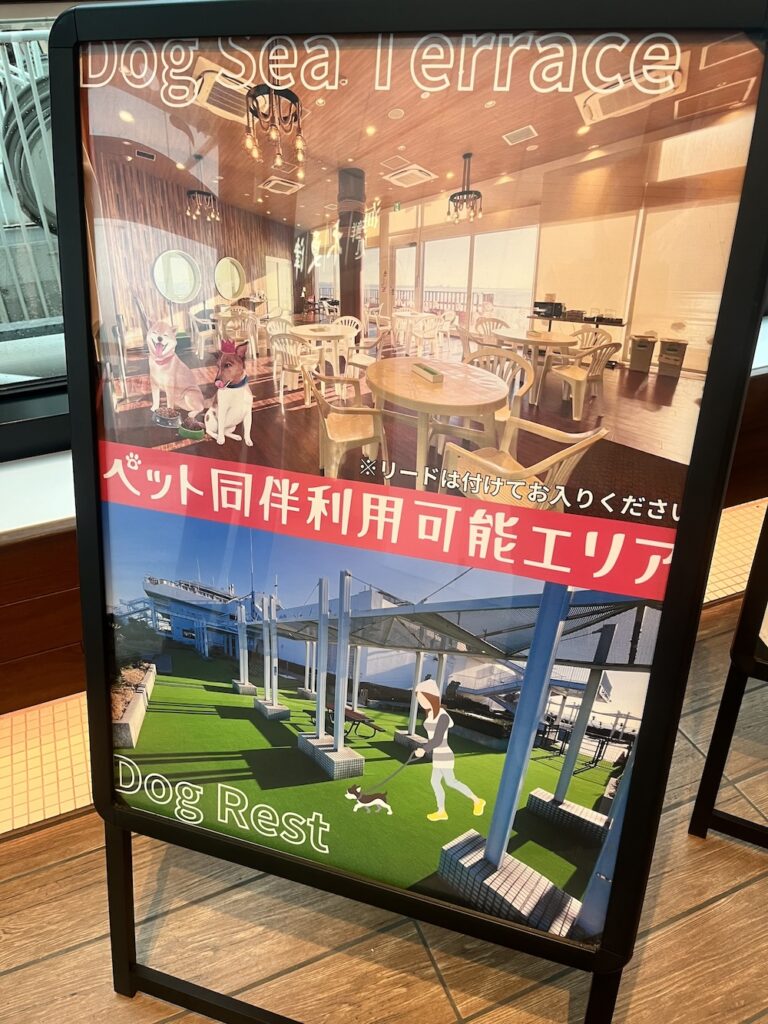
A temporary “dock rest” has been created at Umihotaru.At the end of 2023, it will be moved to the third floor deck on the Kawasaki side.
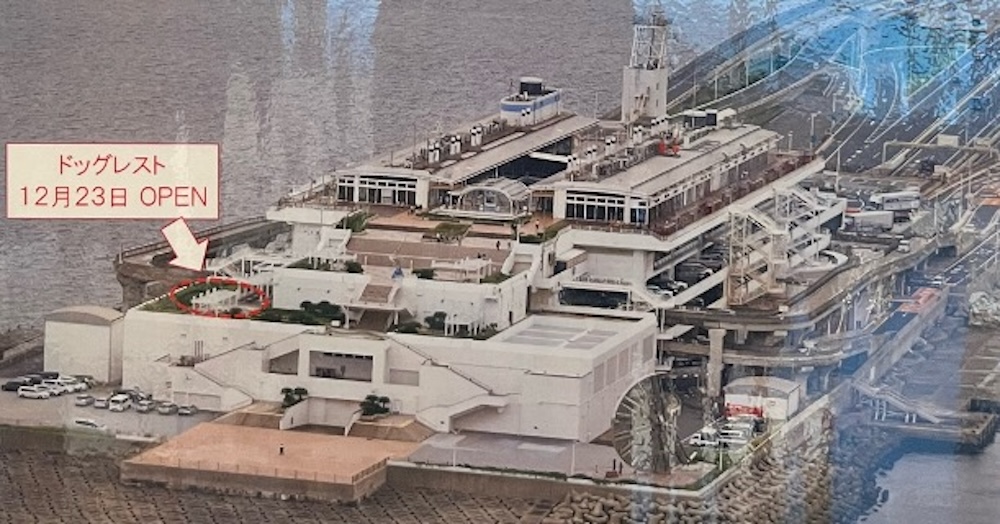
I’m not familiar with the term “dog rest,” but it’s not a dog run, but a space where you can enjoy with your dog on a leash. There are cars driving at high speed nearby, so I think it’s a precaution in case of an accident.
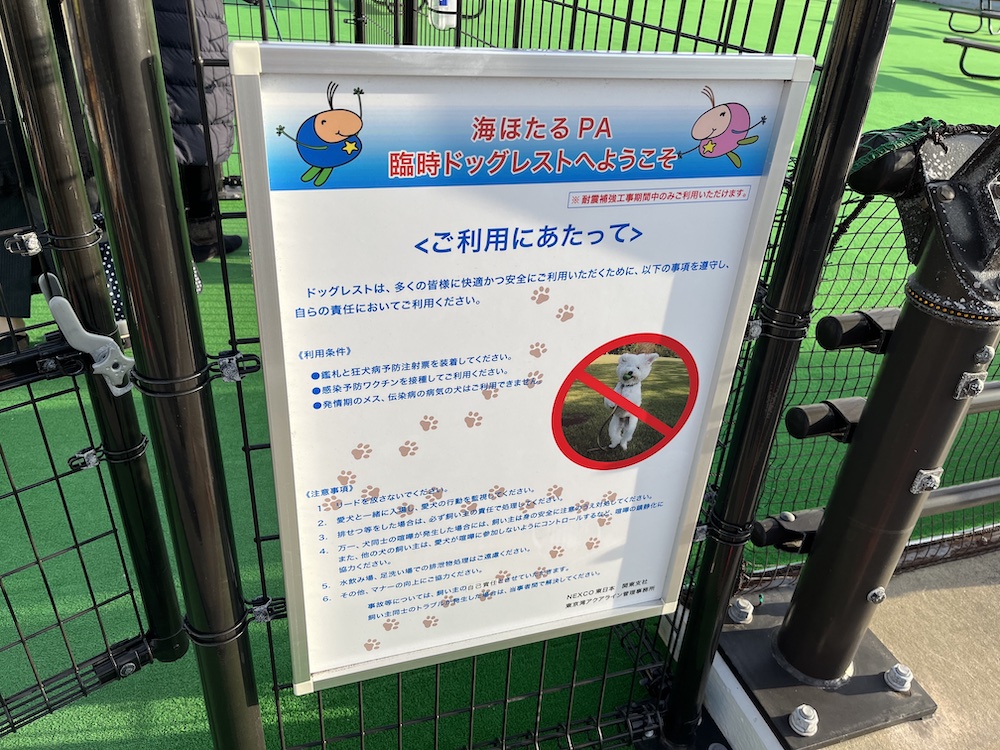
Besides this dog rest area, Umihotaru has other places where you can spend time with your dog.
You can take your dog for a walk on a lead on the observation deck on the 5th floor. You can walk all the way around Umihotaru, so you can watch the sunset with your dog and relax in the pleasant sea breeze. If you get tired of walking, there is a room on the same 5th floor called the Dog Sea Terrace where you can bring your dog. You can also dine here. (Available from 9am – 5pm)
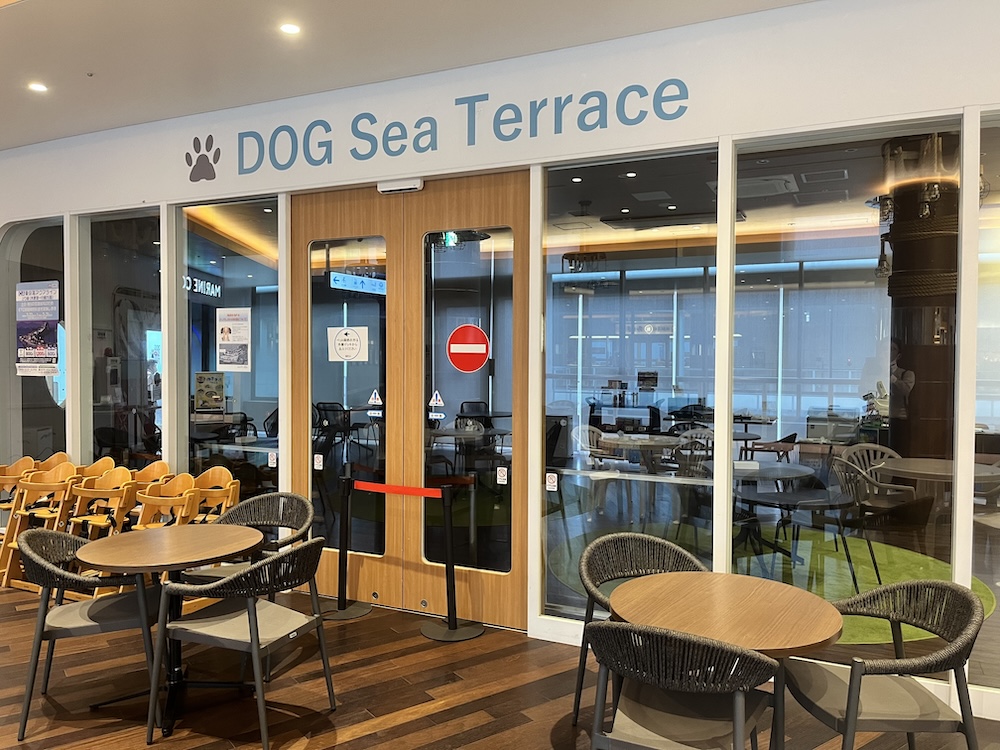
Summary
・ Traffic congestion on the Tokyo Bay Aqua-Line’s northbound journey is heaviest on Sundays, followed by Saturdays.
・ There is no significant difference in traffic congestion between weekdays.
・ Sundays are the day when traffic congestion is heaviest, and the peak hours are long, with long jams seen from 3pm to 8pm. On other days the peak hours are around 5pm.
・ Traffic congestion on the southbound journey tends to be heavier on Saturdays. The southbound journey is not as congested as the northbound journey.
・ The road has been closed when a typhoon is approaching or when strong winds exceed 20m/s.
Any final words?
While you should be aware of traffic congestion when using the Tokyo Bay Aqua-Line, on a clear day you can get a beautiful view of Mt. Fuji, and when you enter the tunnel from the highest point of the bridge you can see a breathtaking sight that is hard to describe in words.
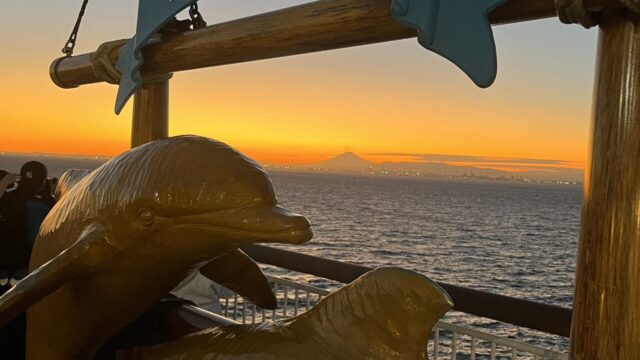
Traveling along the Tokyo Bay Aqua-Line can be a trip purpose in itself. We hope you will enjoy it.
by Masaichi
